
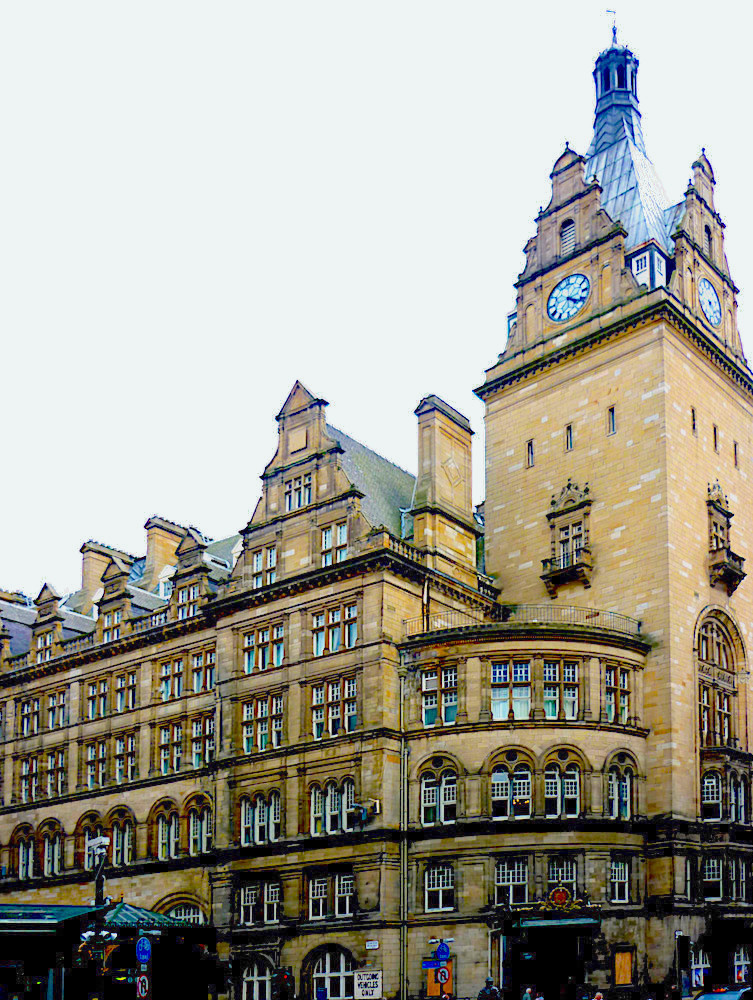
Left: Glasgow Central Station, entrance on Gordon Street, below the long canopy. Right: voco Glasgow Central Hotel, entrance in the curved bay below the clock tower, on the corner between Gordon Street and Hope Street.
Glasgow Central Station, Gordon Street, Scotland, was built as the main and terminal station on the Caledonian Railway. It has a long and complex building history involving many important architects and civil engineers. The original station was constructed by the firm of Blyth & Cunningham, which operated under that name from 1866-86: the partners were Edward Lawrence Ireland Blyth (1825-1902), and George Miller Cunningham (1829-1897). The station was built from 1876-1879, opening for its first train services for the Caledonian Railway in August 1879. The all-important bridge needed to carry the tracks over the River Clyde at Broomielaw was executed by the brilliant Scottish civil engineer, Sir William Arrol (1839-1913). Later, extra platforms were added by architect James Miller (1860-1947) and engineer-in-chief/architect Donald Alexander Matheson (1860-1935). Miller had been with the Caledonian Railway's engineering department in Glasgow since 1888. It is interesting to learn that he and Matheson had been school-friends (see "Donald Alexander Matheson"). At this time a new railway bridge was constructed for Matheson by Sir William Arrol and Co, and Morrison and Mason.
But what is shown above is the impressive and elaborate voco (i.e. part of the InterContinental group) Grand Central hotel frontage, described as "early Renaissance ... with Italian and French elements and a Scandinavian clock tower" ("(Sir) Robert Rowan Anderson"). This was designed by another distinguished figure, Robert Rowand Anderson (1824-1921) of Edinburgh (both he and Arrol would be knighted), and completed in 1883. A large office block was added next, in 1901, again by Miller (on the Hope Street side), while Miller and Matheson's further extension of the hotel opened in 1907.
Matheson's paper on the extensions contains interesting details about the challenges faced during these major developments, and the facilities incorporated (including lavatories, hairdressers and bootblacks). Although the prominent corner tower was to Anderson's design, another striking feature, the curved entrance was down to Matheson himself: Michael Meighan says that "he believed that curved buildings and rounded corners helped prevent crowding and bottlenecks." This belief also inspired the internal arrangements, as seen in the last two photographs below.
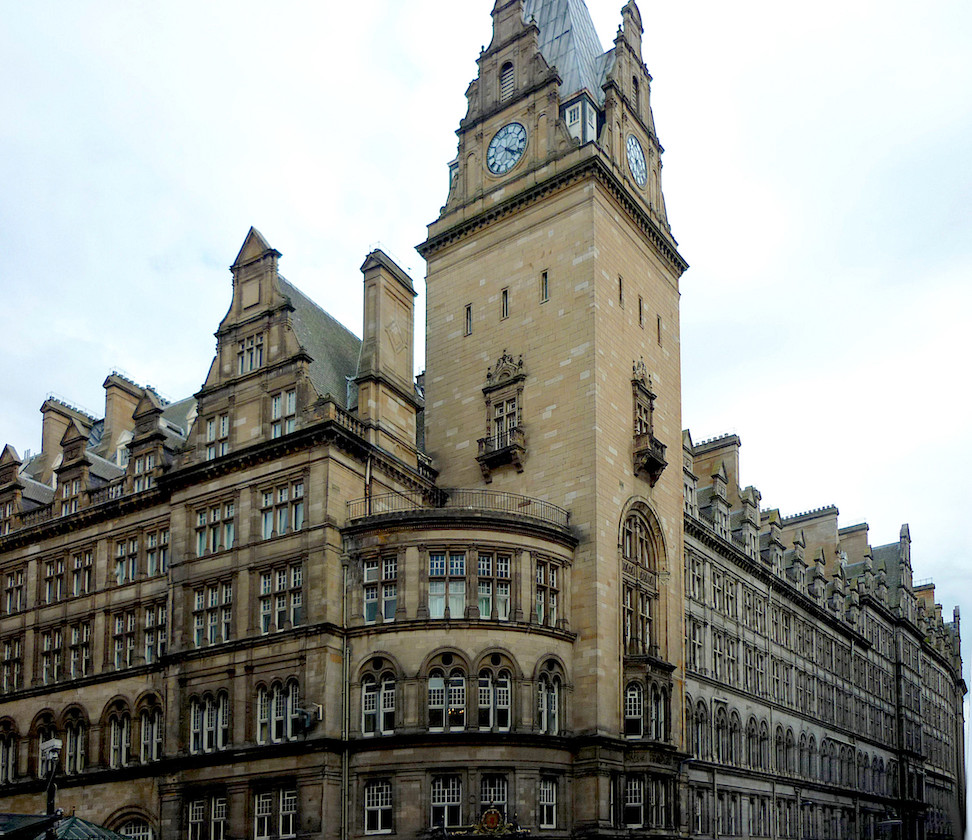
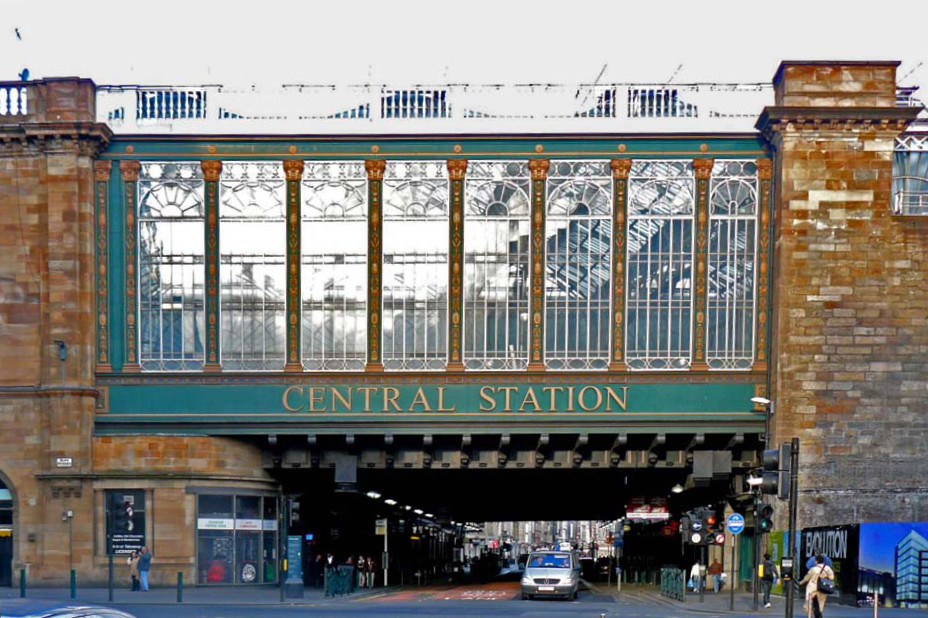
Left: The corner, with the extension along Hope Streetto the right. Right: The Hielanman's Umbrella passing over Argyle Street.
This very distinctive Victorian-style platform bridge, dating from 1879, is called (in English) "Highlandman's Bridge" because the displaced Highlanders dispersed around the city used to gather and shelter under it during the later phase of Highland Clearances. Another aspect of this complex terminal was the inter-connected Low Level Station, which opened in 1896, closed in 1964, and then re-opened for suburban use.
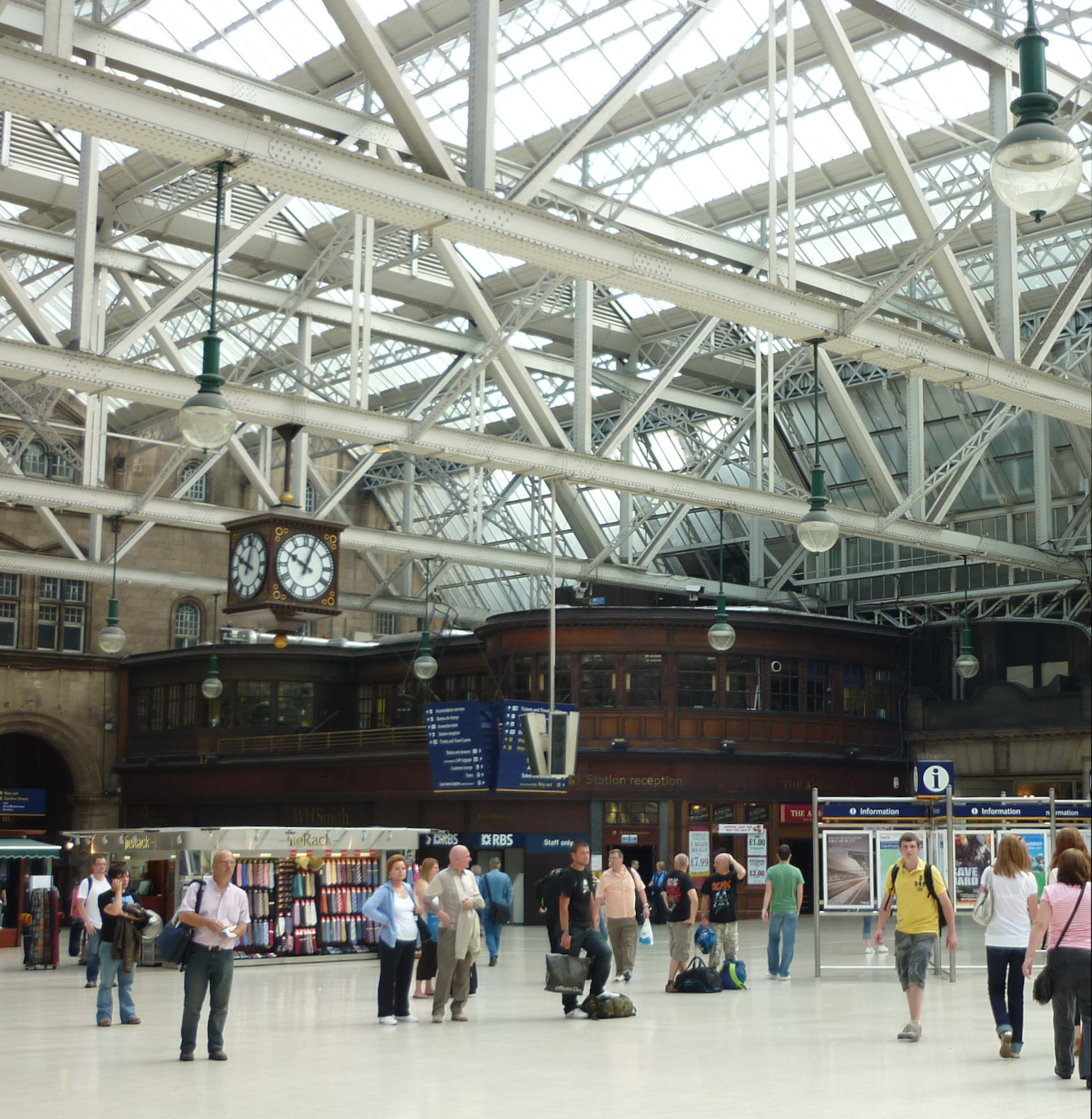
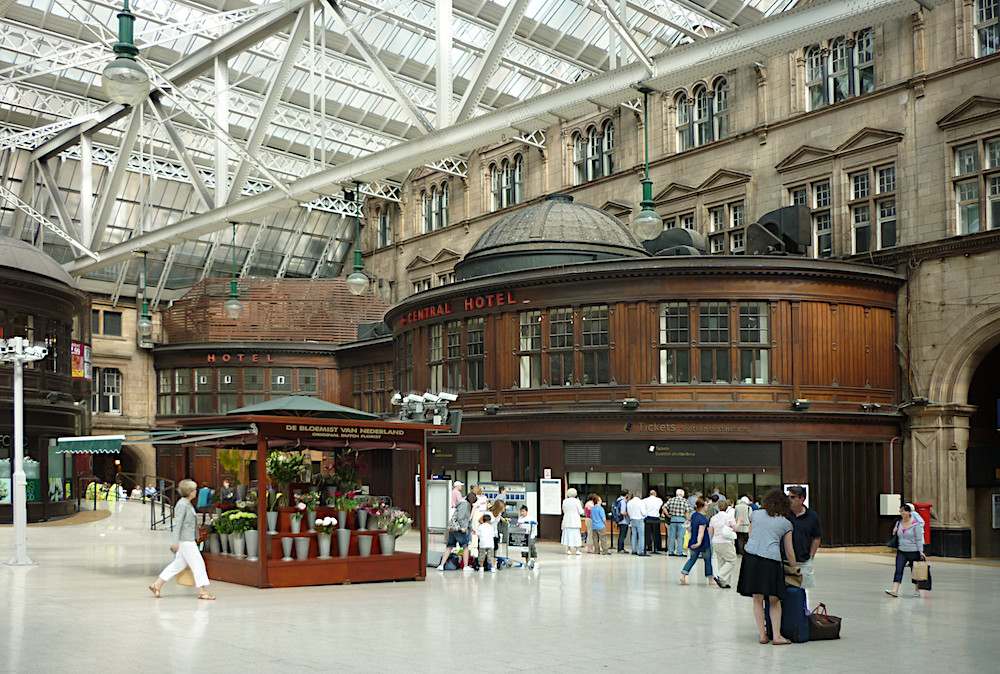
Two views of the concourse.
Inside the station, the firm responsible for the steelwork was the Motherwell Bridge and Engineering Co. ("Glasgow, Gordon Street, Central Station"). The same Canmore site says that "Of the original internal fittings of the station little survives," but these curving fittings in the concourse, dating to the late nineteenth-century and Edwardian extensions, and reflecting Anderson's beliefs, look historic and enough. Recent refurbishments have been sensitive to earlier designs, and in some cases mimicked them (see "The History of Glasgow Railway Station), and Michael Meighan notes that "the classic clock [shown above left] with Roman numerals has been reinstated."
Related Material
- Closer view of the Hielanman's Umbrella windows
- Glasgow Central Station, II: roof, canopies and platforms
- The Caledonian Railway Bridge
Photographs, except for that of the Hielanman's Umbrella, text and formatting by Jacqueline Banerjee. The photograph of the Hielanman's Umbrella on this page was taken by Colin Price. You may use these images without prior permission for any scholarly or educational purpose as long as you (1) credit the photographer and (2) link your document to this URL in a web document or cite it in a print one. [Click on the images to enlarge them.]
Bibliography
"Blyth & Cunningham." Dictionary of Scottish Architects. Web. 11 January 2021.
"Donald Alexander Matheson." Dictionary of Scottish Architects. Web. 11 January 2021.
"Glasgow, Gordon Street, Central Station." Canmore. Web. 11 January 2021.
"The History of Glasgow Railway Station." Network Rail. Web. 11 January 2021.
"James Miller." Dictionary of Scottish Architects. Web. 11 January 2021.
Matheson, Donald Alexander. Glasgow Central Station Extension. Minutes of the Proceedings of the institution of Civil Engineers. 175 (1909), Paper no. 3737 (requires subscription or entry through your institution). Web. 11 January 2021.
Meighan, Michael. Glasgow Central Station through Time. Stroud, Glos.: Amberley, 2013 (Ebook).
"(Sir) Robert Rowan Anderson." Dictionary of Scottish Architects. Web. 11 January 2021.
"William Arrol." Grace's Guide. Web. 11 January 2021.
Created 10 January 2021